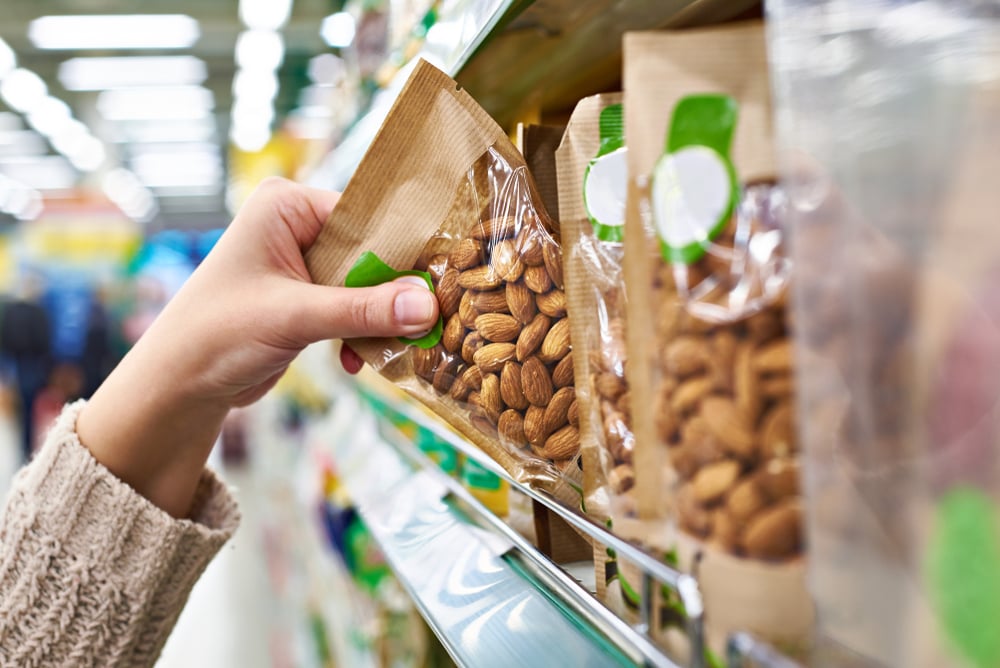
Making your products stand out from the crowd is often easier said and done. And with numerous factors to consider when it comes to food packaging, ensuring your products leave a lasting impression requires some key considerations.
In the UK, food and drink industries contribute more to the economy than all other sectors - including automotive and aerospace - with the country’s annual exports in 2021 valued at £20 billion.
But to ensure your business finds itself amongst those thriving in a competitive market, nailing your packaging is essential. In fact, your packaging should play a pivotal role in your branding and marketing strategies. The design choices, sustainability profile, engagement factor and overall visual appeal of your final product will play an enormous role in influencing your sales in the long term.
So to help you on the way to better packaging solutions for food products, here are some key design and production tips.
The keys to better food packaging
1. Material Choice
It goes without saying that the material you select for your packaging affects almost all design choices you’ll make thereafter. From flexibility and sustainability, to printing and labelling opportunities, your choice of packaging material underpins how your product will ultimately be stored, transported and displayed.
Unsurprisingly, your choice of material needs to be appropriate for your product. And there’s a great deal of variety when it comes to selecting the right core material to house your goods. From glass, plastic, cardboard and metals, the options are numerous. Of course, food hygiene, freshness, degradability and cost should all be considered - along with reusability and recycling capacity.
2. Regulatory Compliance
If your business is to see any success, it must first ensure its products are fit to be sold in stores. To do these, follow food packaging regulations and be sure to display the following information on your packaging:
- the name of the food
- a ‘best before’ or ‘use by’ date
- any necessary warnings
- net quantity information
- list of ingredients (if there is more than 1)
- the country or place of origin (if required)
- the lot number or use-by date
- any special storage conditions
- cooking instructions (where necessary)
The primary purpose of these regulations is to safeguard consumers and reduce the risk of allergic reactions. This has been bolstered by the introduction of stricter labelling protocols for business, in an effort to reduce deaths and hospital admissions as a result of packaging oversights.
3. A practical, transparent approach
Your brand values are not only expressed through messaging and advertising campaigns. In fact, both your products and packaging should be an extension of your ethos and marketing approach. That’s why it’s essential to be truthful about what makes your food product great.
Being truthful means more than using accurate descriptions, though. The packaging shouldn’t mislead (by being oversized, for example). Further, an over-the-top approach to packaging can negatively impact your brand and cause frustration for customers - both as an unboxing experience and a waste management issue.
Striking a balance with the design means being realistic and accurately representing your product from the outset. Otherwise, the chance of ending up on a list of brands making poor packaging choices is greatly increased.
Looking for a simple win? Consider cardboard sleeve cut-outs and clear boxes to offer customers the chance to see what they’re getting before they make their purchase.
4. Function first
Food products regularly rank at the top of impulse purchase lists. That’s why it’s important to consider your customers’ key motivations and reasons for purchasing. Primarily, customers want to know what the product is, its ingredients, how it’s prepared and how to dispose of the packaging. Deviating from this core principle and throwing in needless information can confuse matters and lead to customers choosing the easier-to-read alternative on the neighbouring shelf.
5. Impactful design
While it’s certainly true that adding unnecessary bells and whistles can alienate consumers and cause frustration when it comes to waste management, it’s still important for businesses to consider how their products can stand apart from their competitors’. To do this, consider how your brand will compel customers to choose your goods over any others. Offering greener packaging choices, making use of clean, clear messaging or applying accents of colour can all elevate your goods and provide opportunities to set your products apart from the rest.
f your products boast the latest in fashionable ingredients – such as avocado oil, kelp and non-dairy pulp – be sure to maximise the impact of the trend by factoring these elements into your messaging.
Sustainable sourcing
In an environment of growing climate concerns, sustainability has become an essential goal for almost all businesses across every sector. Packaging is no different.
More and more consumers are seeking traceability and accountability from brands when it comes to the environmental viability of their packaging. Simple recycling, increased reusability, and sustainably sourced materials are all essential and are no longer fringe concerns. To meet this demand, ensure your packaging supplier can offer full transparency about their supply chains and detailed information about the sourcing and production processes in place.
Looking to make the switch truly sustainable, food-safe packaging solutions? We can help.
From fully recyclable packaging, to bespoke solutions for FMCG businesses, we can offer the manufacturing, storage and delivery facilities to ensure your food packaging needs are met. Email us at sales@allpack.uk.com, send us a message, or phone 01543 396700 today to discover how we can integrate process-efficient solutions into your business.